Aug 26, 2025 1:53 PM
Blindfold Test: Buster Williams
Buster Williams, who at the age of 83 has been on the scene for 65 years, had never done a Blindfold Test. The first…
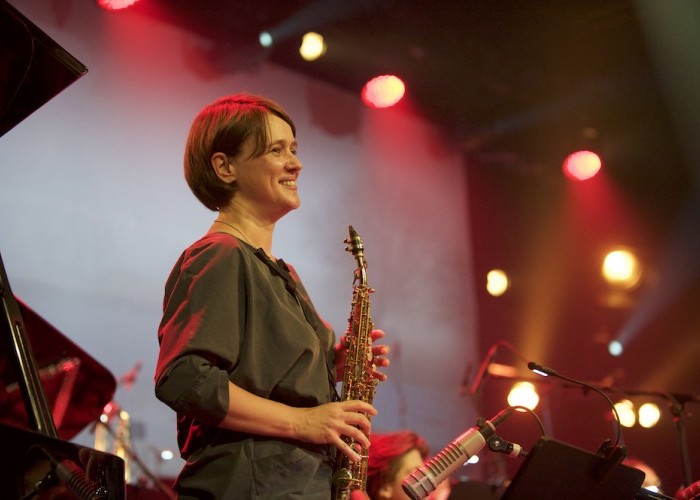
Reedist Ingrid Laubrock said she relishes the freedom that comes with recording for independent labels like Relative Pitch and Germany’s Intakt, but remains skeptical of the music industry’s digital shift.
(Photo: Helmut Berns)“The musicians need to get paid,” she said in November, speaking from Germany, where she was touring with Halvorson’s octet. While Laubrock appreciates that it’s easier than ever for artists to record, she worries that full generations of fans share “a growing sense that music has to be available for free. That to me is synonymous with a gradual decline in sound and production quality.”
Another concern: That the track-by-track pricing model of iTunes and other services impinges on both the idea of a coherent album programmed by an artist. She notes that a new pricing structure incentives recording more, shorter tracks. Her most recent album, Contemporary Chaos Practices (Intakt), only has four, two of them more than 15 minutes long.
Laubrock, who topped the 66th Annual DownBeat Critics Poll in the Rising Star-Tenor Saxophone category, prefers to let labels handle questions about price points or how much of an album to make available online. Two of her recent recordings illustrate divergent approaches. Chaos pairs soloists like Halvorson, pianist Kris Davis, trumpeter Nate Wooley and Laubrock with orchestral pieces composed by the bandleader. And like most Intakt releases, it’ll be available as a physical release, an MP3 download for $9.80 and a high-bitrate download for $15.80. Meanwhile, Utter, a duet session with drummer Tom Rainey on Relative Pitch, is available only as a physical product.
“I trust that listeners who want to hear the work can find the work,” she said.
Like Laubrock, pianist/composer and MacArthur fellow Jason Moran stands as one of those musicians people in the future will brag about having seen play way back when.
After 18 years on Blue Note, Moran went totally independent. He’s decamped to Bandcamp and his own Yes Records, which he runs with singer Alicia Hall Moran, his wife. There, his recordings have tended toward the searching and the experimental, what he calls “these in-between areas.” These include works commissioned from arts institutions and collaborations with artists from outside the jazz world. February’s Looks Of A Lot, a recording of work commissioned by the Chicago Symphony Center, features the choir and jazz band of Chicago’s Kenwood Academy High School and a full drum line joining Moran’s ensemble. The record peaks with a fluttery and delicate solo Moran punch-programmed onto paper and fed into a music box. Then, a few weeks later, the pianist issued Music For Joan Jonas, a project both more intimate and sprawling. Here, Moran plays piano accompanied by cryptic narration and occasional percussive clattering from the titular performance artist. It’s an arresting, enveloping release, a study in interpretative improvisation—as often tense as it is serene. It’s also hard to imagine a traditional label pushing it.
“Some of these new projects seem surprising; these are all things that have always been going on in my performance history,” the pianist said. “Now, I’m putting them down forever. I had been hanging around artists—mostly visual artists—who had been discussing the idea of taking ownership of the work that you make. There was a power in that.”
Moran, in additional to posting portions of the recordings on Bandcamp, presses a few hundred, sells them at shows and online, and truly gets them down forever. And then, because he worries over that question of what music is worth, he puts a real price on it: $20 per digital download or CD, with the double-length Jonas project retailing for $30.
“I’m not a business man,” he said, after being told some might listen more intently to a premium-priced LP than one that costs $10. “Twenty dollars is what CDs cost in the 1980s and ’90s. I remember what $20 felt like back then. Twenty dollars isn’t even $20 now.”
He snowballed: “The shock of the sticker price is only a shock compared to how people give music away. I adore people who want to purchase the music.”
OF COURSE, MANY LISTENERS don’t want to purchase music—any music. While sorting out for themselves what their music should cost, Douglas, Laubrock, Moran and everyone signed to New Amsterdam face another thorny question: What to do about Spotify?
“Streaming is not working out too well for artists,” said Douglas, though he notes that many artists want to be on there just to get heard. It’s a way to get audiences to buy ticket to shows. To that end, Greenleaf’s policy, usually, is to offer a track or two from most LPs on Spotify, and for free on Bandcamp, but not an entire record. But true to its ethos of giving musicians freedom, the imprint allows its artists to make the choice, individually, just as it lets them determine pricing.
Moran, though, finds the streaming services tragic: “When I poll my students at the New England Conservatory, they’re mostly all listening to Spotify; the free version.”
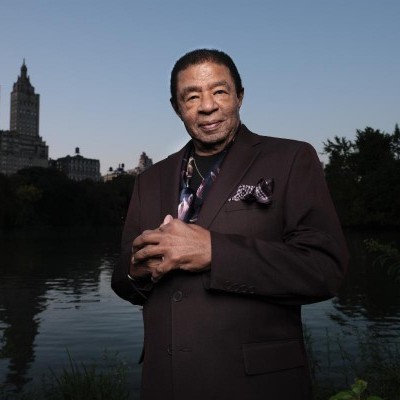
“What I got from Percy was the dignity of playing the bass,” Buster Williams said of Percy Heath.
Aug 26, 2025 1:53 PM
Buster Williams, who at the age of 83 has been on the scene for 65 years, had never done a Blindfold Test. The first…
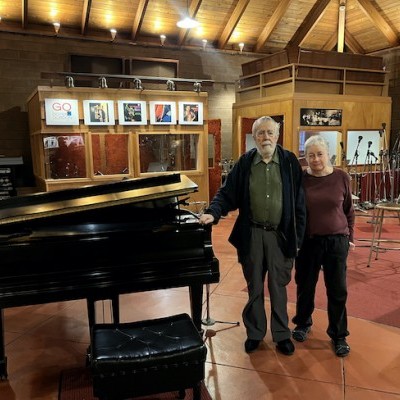
Don and Maureen Sickler serve as the keepers of engineer Rudy Van Gelder’s flame at Van Gelder Studio, perhaps the most famous recording studio in jazz history.
Sep 3, 2025 12:02 PM
On the last Sunday of 2024, in the control room of Van Gelder Studio, Don and Maureen Sickler, co-owners since Rudy Van…
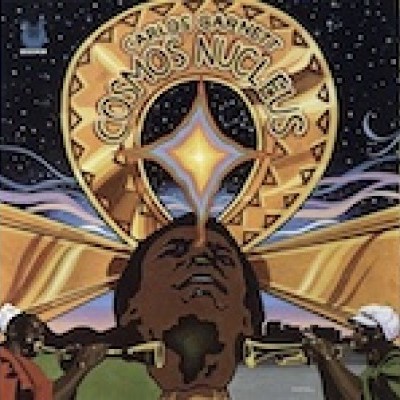
The Free Slave, Cosmos Nucleus and Sunset To Dawn: three classic Muse albums being reissued this fall by Timer Traveler Recordings.
Aug 26, 2025 1:32 PM
Record producer and “Jazz Detective” Zev Feldman has launched his next endeavor, the archival label Time Traveler…
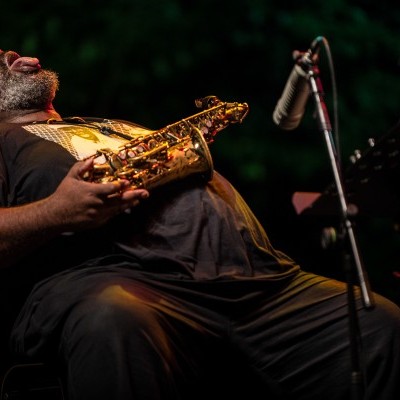
This year’s Jazz em Agosto set by the Darius Jones Trio captured the titular alto saxophonist at his most ferocious.
Aug 26, 2025 1:31 PM
The organizers of Lisbon, Portugal’s Jazz em Agosto Festival assume its audience is thoughtful and independent. Over…

Trio aRT with its avalanche of instrumentation: from left, Pheeroan akLaff, Scott Robinson and Julian Thayer.
Sep 3, 2025 12:03 PM
Trio aRT, a working unit since 1988, shockingly released its very first studio recording this summer. Recorded in…